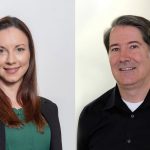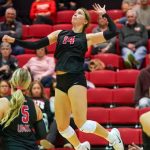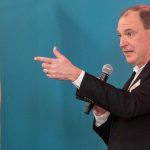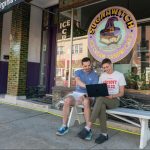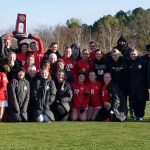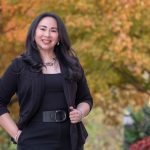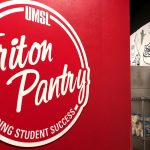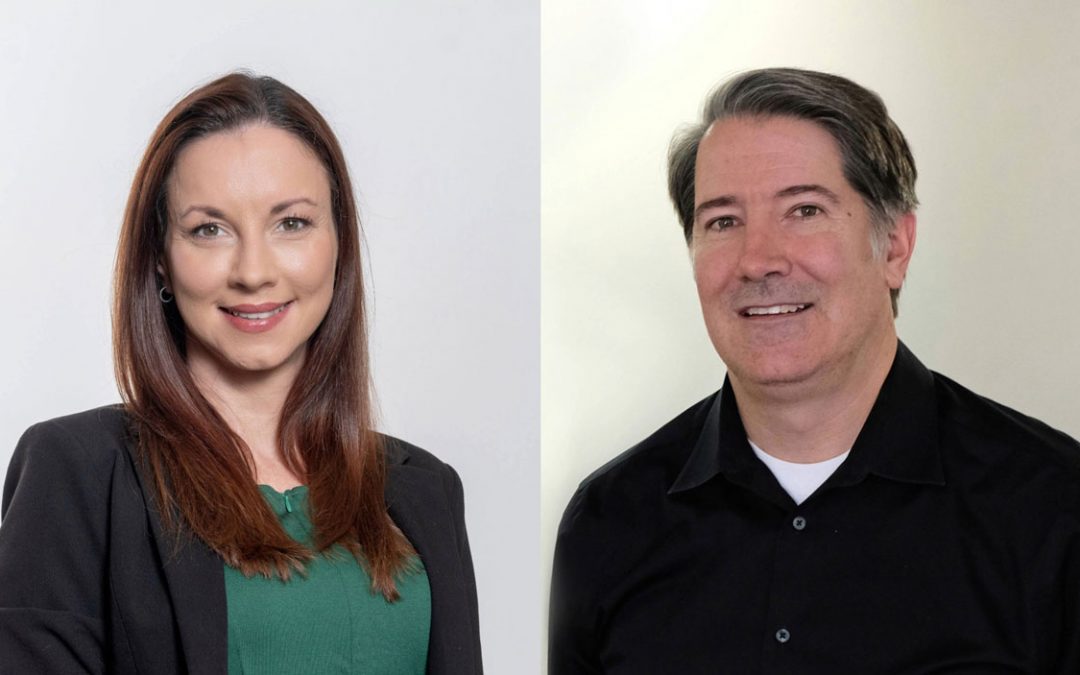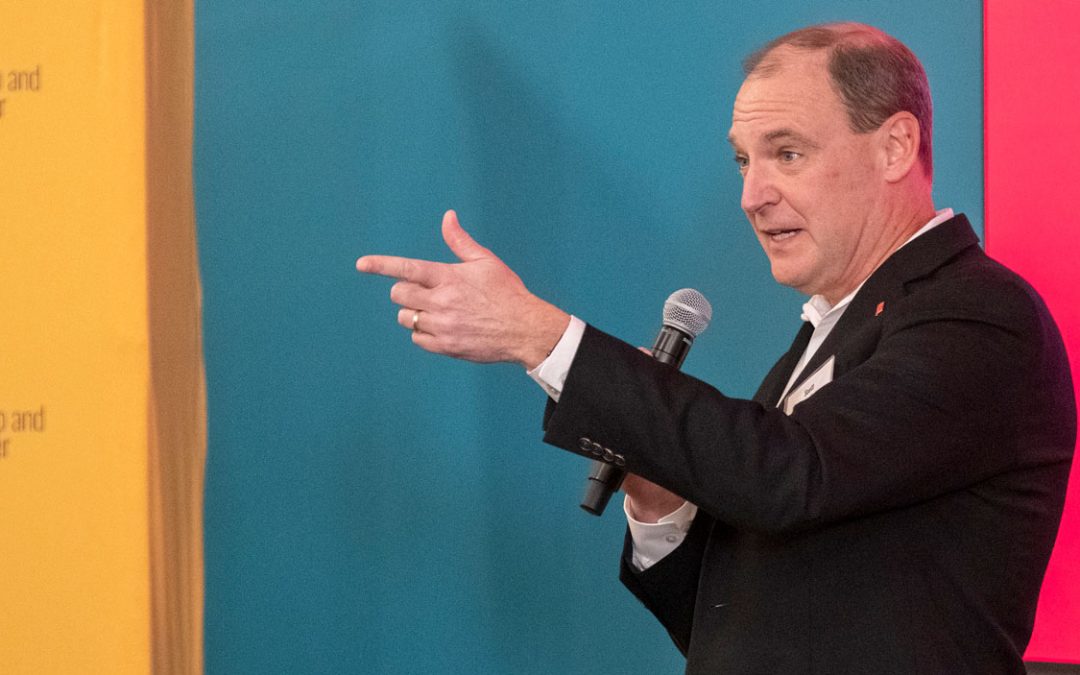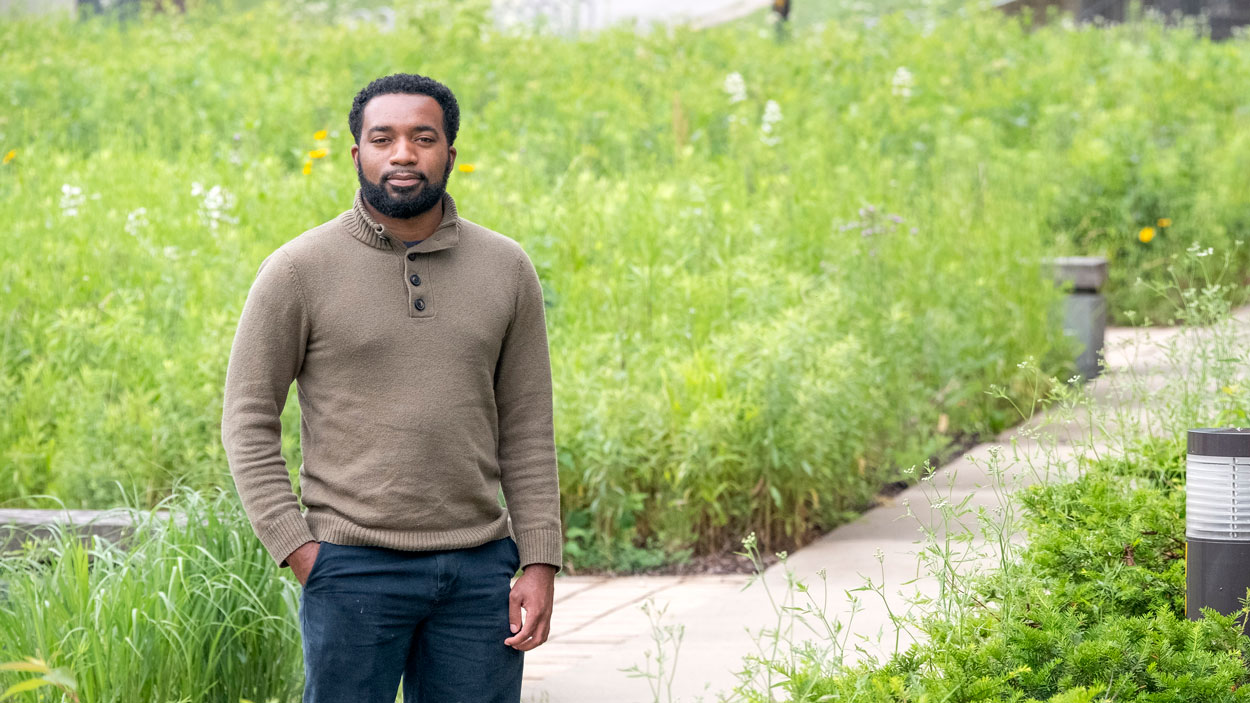
Internship opportunities at Intramotev and Nidec Aerospace were essential elements of Emmanuel Morgan’s time in the Joint Engineering Program. (Photos by Derik Holtmann)
Emmanuel Morgan’s involvement with the University of Missouri–St. Louis started a couple of years before he enrolled in the UMSL/Washington University Joint Undergraduate Engineering Program in 2020.
When he was a junior at Kirkwood High School in 2018, Morgan got involved with the Bridge Program – which has helped guide high school students through the process of making informed college choices since its inception in 1986 – and his eyes were opened to whole new possibilities.
Morgan’s UMSL journey culminated with an engineering degree this May, and he started his professional career earlier this month in a project management role at Nooter/Eriksen.
UMSL Daily recently caught up with Morgan to look back on his UMSL success story. (The interview has been edited for length and clarity.)
UMSL DAILY (UD): You’ve had quite the UMSL experience. Take me back to the start of your involvement with UMSL through the Bridge Program, back when you were at Kirkwood High School.
MORGAN: For me, that’s when the whole idea of going to college actually became real. I always knew college was something I would do but I just thought it would haphazardly happen – apply to some colleges, take out some loans, then find your passion while there. But at the Bridge Program, one of the first things they talked about was how you can have a plan for college, that it didn’t have to be full of mistakes. They showed me you can go in with a plan, follow that plan, and have a support system in place so everything can be conducive to your success and achievement.
UD: That must have been encouraging to hear.
MORGAN: I went to a high school where everyone was pretty high achieving, which was a little bit daunting. It kind of seemed like no matter how well you did, there was always someone that was miles ahead of you, like people who skipped two years of math after third grade. But at the Bridge Program, they were like, “You’re not behind. You’re going to work hard and learn how to showcase your achievements and portfolio.” They were pointing out the different things I was involved with that I just took for granted and showed how those were highlights of character or attributes I was skilled at, and that was a huge conference boost.
UD: What else did you pick up?
MORGAN: One of the biggest things I took away from the Bridge Program was that they mentioned you can go to college debt-free. I thought that was only for people who got full rides. They said that’s one way, but showed how you can also stack scholarships, and they also mentioned the differences between scholarships, loans and grants. It really hit home, how you can know about that before actually applying so you can be prepared for different stages before you hit them. I told my parents that I wanted to go to college debt-free. My parents were like, “Oh, loans are fine. It’s normal. We had loans.” But that was something I wanted to do.
UD: So after all that, was UMSL your main choice for college?
MORGAN: I actually visited two other universities with engineering programs and had them higher on my list. After doing the Bridge Program, it felt like I had already been at UMSL. I was thankful for what they had done for me, though. So we went ahead and did the tour, and the moment we started walking through campus, it just kind of felt like home. We were going through the Touhill Center, the MSC, the Rec Center and every building, one after another, felt right. It seemed like the students had camaraderie with each other, like it was a small family. And with the Bridge Program, I already knew the support system was there.
UD: That’s cool to hear.
MORGAN: I realized that everything I was looking for was at UMSL and it was practically in my backyard. I had lived in the same house maybe 15 minutes away for years. As we were walking off campus, I told my mom and dad, “I’m going to UMSL.” So they were all cheering on the way to the car. I took selfies and everything. I hadn’t even applied yet, but I knew that’s where I was going to school.
UD: What other steps did you take to get ready?
MORGAN: I made sure to get a job. The scholarships covered school, but I knew I needed money for books and for food, just different things like that. So I got a job at Menards the summer before school started, and I saved every paycheck. I worked extra hours and saved up like $3,000 in that one summer because I knew I wasn’t going to be able to work through the semester.
UD: You started at UMSL in the fall of 2020, which was near the start of the pandemic. What was that like for you?
MORGAN: The first two years were kind of a blur but a lot of that was because COVID was going on, so everything was pretty much online. The Honors College staff was just so supportive at every step. They prepped you before the next phase, telling you a month or two before the registrar opened, and just different things like that to get you through. I feel like my UMSL experience really started to shine once I got to the WashU level.
UD: So you started at WashU right about the time things were mostly back to normal. How was that experience?
MORGAN: The Joint Engineering Program just draws the most interesting people. Because it has evening classes, there are veterans who have been doing engineering full time in the military, so they come to the program to get the paper so they can get a full-time engineering job. And you have students like myself who went straight through from UMSL and others who come from community college. I was just having the time of my life, sitting through classes, talking with different people with different backgrounds but shared experiences. It’s the most incredible thing.
UD: I remember when we talked last year you mentioned the camaraderie with the people in the program. Did that just happen naturally or through study groups or something?
MORGAN: I met my engineering friends my first semester at WashU. There was a class I felt like I was really going to struggle with, so I started a study group the second week. Only two people showed up, Jessica and Jacob, and they became my friends. Then two other guys – Kyle and Seth – showed up, so that was my engineering group. We’re still friends to this day. And Jacob and Jessica actually just got engaged in December, so I like to take credit for them meeting.
UD: Wait, really? They didn’t know each other before?
MORGAN: No, they had never met.
UD: That’s kind of amazing. You and I met when I was working on the Intramotev story. What was that experience like for you, working there as an intern for Tim Luchini, who is a professor in the Joint Engineering Program?
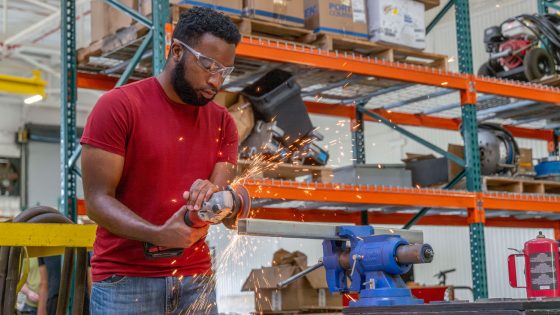
During his internship at Intramotev, Morgan had the opportunity to gain extensive hands-on experience.
MORGAN: Tim’s one of the best things that happened to me during college. He opened a whole new door. I walked in not knowing how to design something by myself, not knowing how to actually go and build it using real tools. I walked out feeling confident that I could do a personal project, do it the right way and safely. The confidence they instilled in me at Intramotev, it felt similar to the Bridge Program. Like, there’s always going to be a bunch of people around you say, “You can’t do this,” or “You can’t do that.” But if you want to learn how to do it the right way, you prepare and then actually go execute. That’s the same mentality. At Intramotev, Tim’s motto was “fail quickly” and then learn from it, get back up and fix what went wrong.
UD: And from there you had an internship at Nidec Aerospace. How did that come about?
MORGAN: I wanted another internship under my belt. Intramotev had more of a startup feel and I wanted to try corporate before graduating, just so I would have a feel for it. Tim was actually the one who suggested it. He was mentioning how he was proud of the interns working hard, but he also recognized that the work at Intramotev wasn’t the normal type of work that mechanical engineers do on a daily basis. So he suggested we might want to try another internship just to have a more well-rounded experience, so we knew what to expect. Not every job was going to be like Intramotev, where you leave all sweaty, dirty and covered in soot.
UD: You started your new job at Nooter/Eriksen earlier this month. Congratulations! What will you be doing there?
MORGAN: They work with sustainable energy, and I’m in project management. I’ll be coordinating with the individuals on-site, coordinating between the construction workers and the engineers and all the suppliers, making sure parts end up where they’re supposed to be. Also, any issues that come up on the job site during construction or during the planning, my department has to come up with a solution for it, either rapidly or have contingency plans in place.
UD: I want to come back to the Bridge Program. You were not just a student who benefitted from the program, but you’ve been pretty involved as sort of an ambassador. In 2020, you were the emcee at the program’s closing event, and then this May you were the keynote speaker for the event. That’s a pretty cool way to make it a full circle.
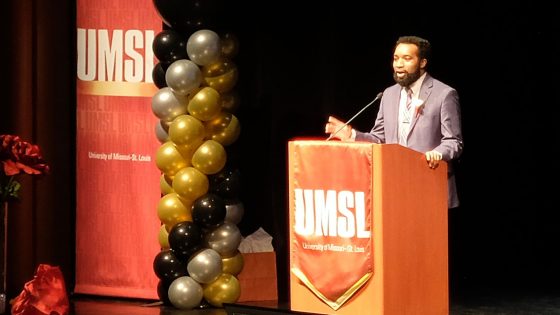
Morgan delivers the keynote address at the 2024 Bridge Program Saturday Academy Award Ceremony.
MORGAN: That was definitely one of the highlights of my college career. Being able to go from Bridge Program student to emcee to being the keynote speaker was just the best thing ever. When I was getting ready for the speech, I was thinking about what the common steps were for any achievement I’ve had in my life. To me, and this is what I talked about, there’s an “I could” phase, an “I want to” phase and then an “I will” phase.
UD: I like that.
MORGAN: In the “I could” phase, you have to know there’s an opportunity to do something, and that’s the spark. For me, it was the Bridge Program, knowing that I could go to college and knowing that I could stay debt-free inspired me. Then, there’s the “I want to” phase. If you know there’s opportunity, but you don’t want to do it, you shouldn’t waste your time doing it. But if you do want to do it, and you know it’s possible, those have to come together. People get stuck in either phase. But when you have an “I could” phase that flows into the “I want to” phase, that leads you to say, “I will.” And when you say, “I will,” that’s where all the hard work is. For me, that was the late nights in school at the library, and because I wanted to go to college debt-free, I ended up working two jobs. If I wanted to meet my goal of going to school debt-free, I had to do what I had to do, even if it didn’t make sense to people around me.
UD: And were you able to reach that goal?
MORGAN: There were a couple times I wasn’t sure I was going to be able to make some payments. I prayed so many times, and God’s been faithful through all of it. Because I not only wanted to go debt-free, but I didn’t want my parents to pay for anything. One time they gave me maybe $250 to cover a payment. They’ve helped me in so many other ways. I wanted to experience committing to a long-term goal, and this was something that I committed myself to in my junior year of high school, seven years ago. When I finished, it was like, “Oh, I did it.”


